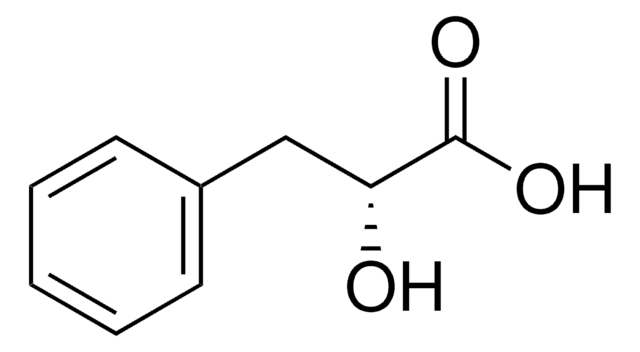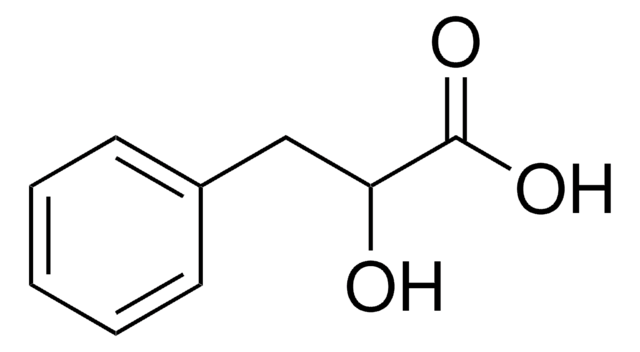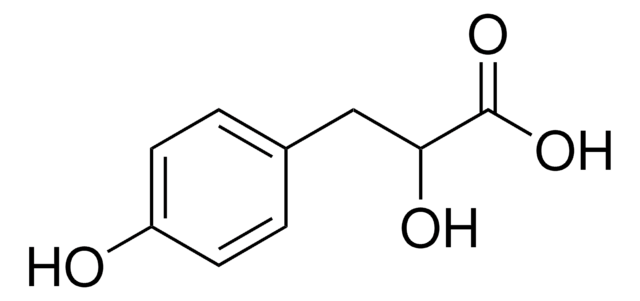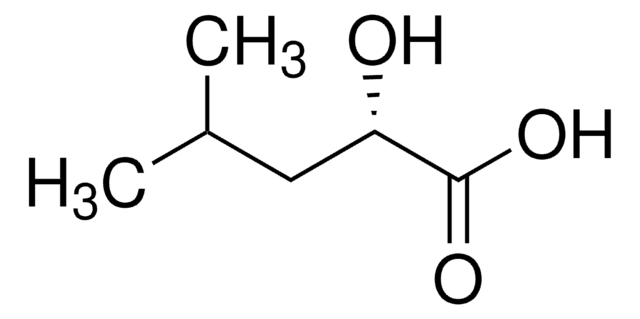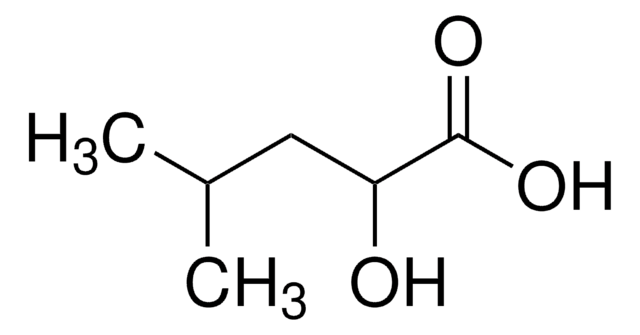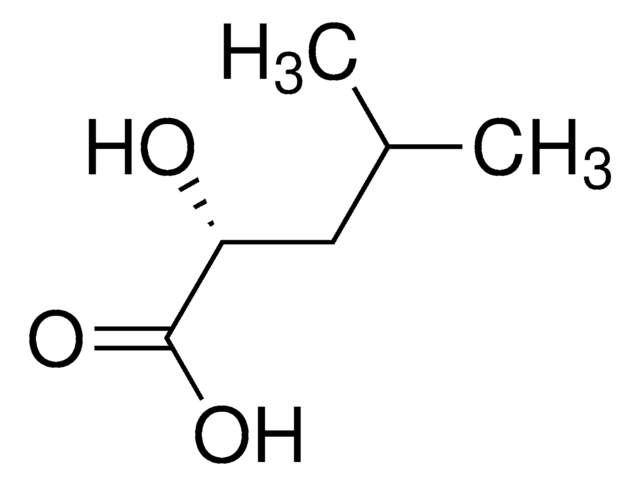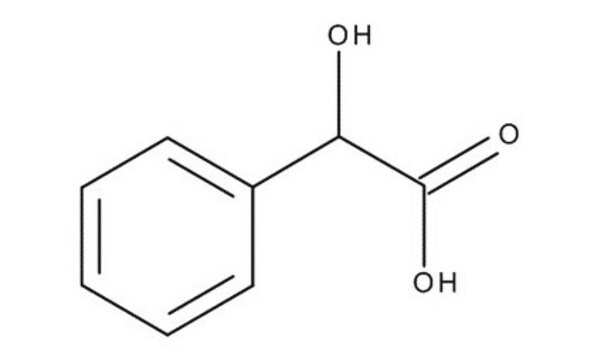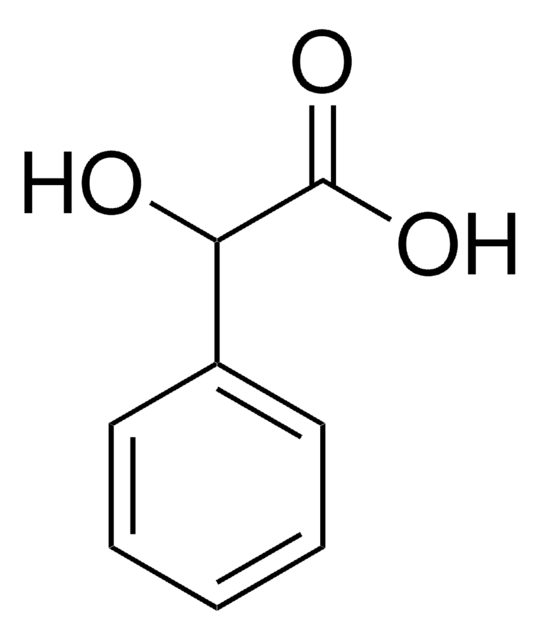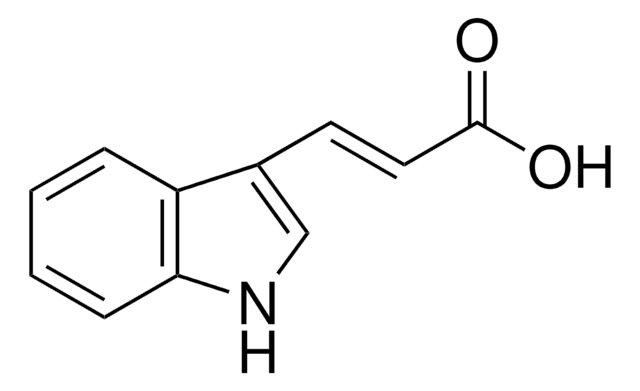113069
L-(−)-3-Phenyllactic acid
98%
Sinónimos:
(S)-(−)-3-Phenyllactic acid, (S)-2-Hydroxy-3-phenylpropionic acid, L-3-Phenyllactic acid
Iniciar sesiónpara Ver la Fijación de precios por contrato y de la organización
About This Item
Fórmula lineal:
C6H5CH2CH(OH)CO2H
Número de CAS:
Peso molecular:
166.17
Beilstein:
2209792
Número CE:
Número MDL:
Código UNSPSC:
12352002
ID de la sustancia en PubChem:
NACRES:
NA.22
Productos recomendados
Nivel de calidad
Ensayo
98%
Formulario
solid
actividad óptica
[α]24/D −20.8°, c = 2 in H2O
mp
122-124 °C (lit.)
grupo funcional
carboxylic acid
hydroxyl
phenyl
cadena SMILES
O[C@@H](Cc1ccccc1)C(O)=O
InChI
1S/C9H10O3/c10-8(9(11)12)6-7-4-2-1-3-5-7/h1-5,8,10H,6H2,(H,11,12)/t8-/m0/s1
Clave InChI
VOXXWSYKYCBWHO-QMMMGPOBSA-N
Descripción general
L-(-)-3-Phenyllactic acid has been used in the development of degradable self-assembling depsipeptide nanofibers.
Aplicación
Referencia del producto
Descripción
Precios
Código de clase de almacenamiento
11 - Combustible Solids
Clase de riesgo para el agua (WGK)
WGK 3
Punto de inflamabilidad (°F)
Not applicable
Punto de inflamabilidad (°C)
Not applicable
Equipo de protección personal
Eyeshields, Gloves, type N95 (US)
Elija entre una de las versiones más recientes:
¿Ya tiene este producto?
Encuentre la documentación para los productos que ha comprado recientemente en la Biblioteca de documentos.
Los clientes también vieron
Controllably degradable ?-sheet nanofibers and gels from self-assembling depsipeptides.
Tian YF, et al
Biomaterials Science, 1(10), 1037-1045 (2013)
Ye F Tian et al.
Biomaterials science, 1(10) (2013-11-14)
Self-assembled peptide materials have received considerable interest for a range of applications, including 3D cell culture, tissue engineering, and the delivery of cells and drugs. One challenge in applying such materials within these areas has been the extreme stability of
Demao Li et al.
Se pu = Chinese journal of chromatography, 22(3), 281-283 (2005-02-17)
Various factors affecting the chiral resolution of 3-phenyllactic acid by capillary zone electrophoresis such as the type of cyclodextrin, concentration of the chiral selector, buffer pH, voltage, and temperature were studied and optimized. Using 30 mmol/L hydroxypropyl-beta-cyclodextrin as the chiral
M M Finney et al.
Journal of chromatography. A, 1066(1-2), 249-253 (2005-03-30)
Accurate and reproducible methods for the analysis of plant allelochemicals are a requirement for the study of chemical interactions between plants. This paper describes a method for sample preparation and quantitative analysis of the allelopathic chemical content of rye (Secale
Wanmeng Mu et al.
Applied microbiology and biotechnology, 95(5), 1155-1163 (2012-07-12)
3-Phenyllactic acid (PLA), which is an organic acid widely existing in honey and lactic acid bacteria fermented food, can be produced by many microorganisms, especially lactic acid bacteria. It was proved as an ideal antimicrobial compound with broad and effective
Chromatograms
application for HPLCNuestro equipo de científicos tiene experiencia en todas las áreas de investigación: Ciencias de la vida, Ciencia de los materiales, Síntesis química, Cromatografía, Analítica y muchas otras.
Póngase en contacto con el Servicio técnico